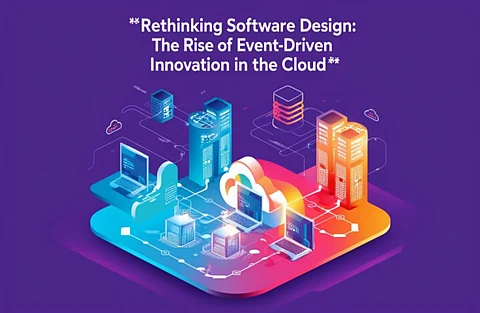

In a compelling exploration of Event-Driven Architecture (EDA), a seasoned researcher in distributed computing systems offers a deep dive into its transformative potential. With extensive expertise in cloud-native architectures, Vineel Muppa presents EDA not just as a technical model, but as a strategic response to the evolving challenges of modern digital ecosystems. His analysis provides a timely perspective on how digital systems can adapt to meet the increasing demands for speed, scale, and resilience in today’s dynamic environments.
Event-Driven Architecture reimagines software design by placing discrete events at the center of system interactions. Instead of tightly coupled components requesting responses from each other, systems now react to meaningful state changes. This architectural shift reduces interdependencies, enhances flexibility, and promotes a modular, responsive design. At the core of EDA are asynchronous interactions that enable applications to operate independently, unlocking resilience and scalability at scale. These systems are naturally aligned with how real-world processes occur triggered by change, adaptable, and always in motion.
EDA hinges on three foundational roles: event producers, brokers, and consumers. Producers, such as user interfaces or sensors, generate event messages from real-world triggers. These are routed by brokers middleware responsible for reliably delivering the messages to consumers. Finally, consumers interpret and act on events by executing business logic. This separation of duties allows each component to evolve independently, encouraging a more adaptable and maintainable system design. By using event schemas and protocols, developers ensure consistent, reliable communication across the system’s architecture.
The principles that underpin EDA publish-subscribe patterns, event sourcing, and asynchronous processing are not new, but their implementation in today’s cloud landscape has brought them renewed relevance. The publish-subscribe model allows systems to decouple senders and receivers, fostering time, space, and synchronization independence. Similarly, event sourcing replaces static data snapshots with immutable logs, allowing for complete historical insight and rollback capabilities. These patterns offer architects a toolkit for building systems that prioritize responsiveness without sacrificing data integrity.
The synergy between cloud computing and EDA is perhaps one of the most significant innovations explored in the article. Cloud-native services now offer fully managed event ingestion, transformation, and delivery tools that let developers focus purely on functionality. Function-as-a-Service (FaaS) platforms align perfectly with event-driven models, offering elastic scalability, reduced overhead, and granular billing. These platforms respond instantly to incoming events, making them ideal for dynamic workloads and real-time processing. Combined with consumption-based pricing, this model ensures cost-efficiency alongside technical performance.
Event streaming platforms are transforming how systems handle continuous data flows. Unlike static data pipelines, these platforms maintain ordered, persistent logs that can be processed and replayed asynchronously. This capability powers real-time analytics and responsive automation essential in domains like monitoring, finance, and industrial IoT. Through strategic use of message queues and event hubs, businesses can implement robust, distributed systems that function cohesively under pressure. These systems thrive in environments where immediacy, scale, and precision are critical success factors.
Implementing EDA is not without hurdles. Maintaining data consistency in the absence of traditional transactions requires patterns like sagas and optimistic concurrency control. Failure management strategies such as dead-letter queues and retry logic help mitigate operational risk. Moreover, the inherent complexity of debugging distributed systems necessitates tools like distributed tracing and event logging. Addressing these challenges has led to the emergence of sophisticated architectural patterns, turning constraints into opportunities for innovation. A deep understanding of these patterns is essential for sustainable system growth.
Exploratory data analysis (EDA) nowadays has found various applications other than how it has been traditionally applied. Over the last few years, approaches like event mesh are now being considered with a firm purpose of dynamic routing that carries events across the hybrid clouds and integration of AI to help prioritise events all of which are part of the evolution of the event-driven paradigm. What is worth mentioning, is the progress being made as far as the outline of such decentralized intelligent adaptive systems is concerned. Moreover, there is also a reorientation in how microservice function as we look at them as components of a choreography of services where they interplay through events and no longer are nodes of a central one. This in turn swells flexibility and agility in the architectural design of the system.
In conclusion, as systems start to become more fragmented, dynamic and complicated, one of the methods to build flexible, hardy and future-proof systems is the Event-Driven Architecture. The reason is capacity expansion harbingered as one of the goals of EDAs and at the same time maintaining real-time components. As of today, no operational experience is available as most of the literature is written at a very high level due to the fact that the default approach to modern systems programming follows proactive processing by Activity Ble via the undermining of efficiency. The forthcoming and Vineel Muppa’s examination of the aforementioned matters provides the requisite information and opportunities for those organisations and persons who are seeking to implement such changes for a cloud environment. To this end mastering EDA will be strategic in organizing institutions to be competent managers in this modern controlled digital condition.
